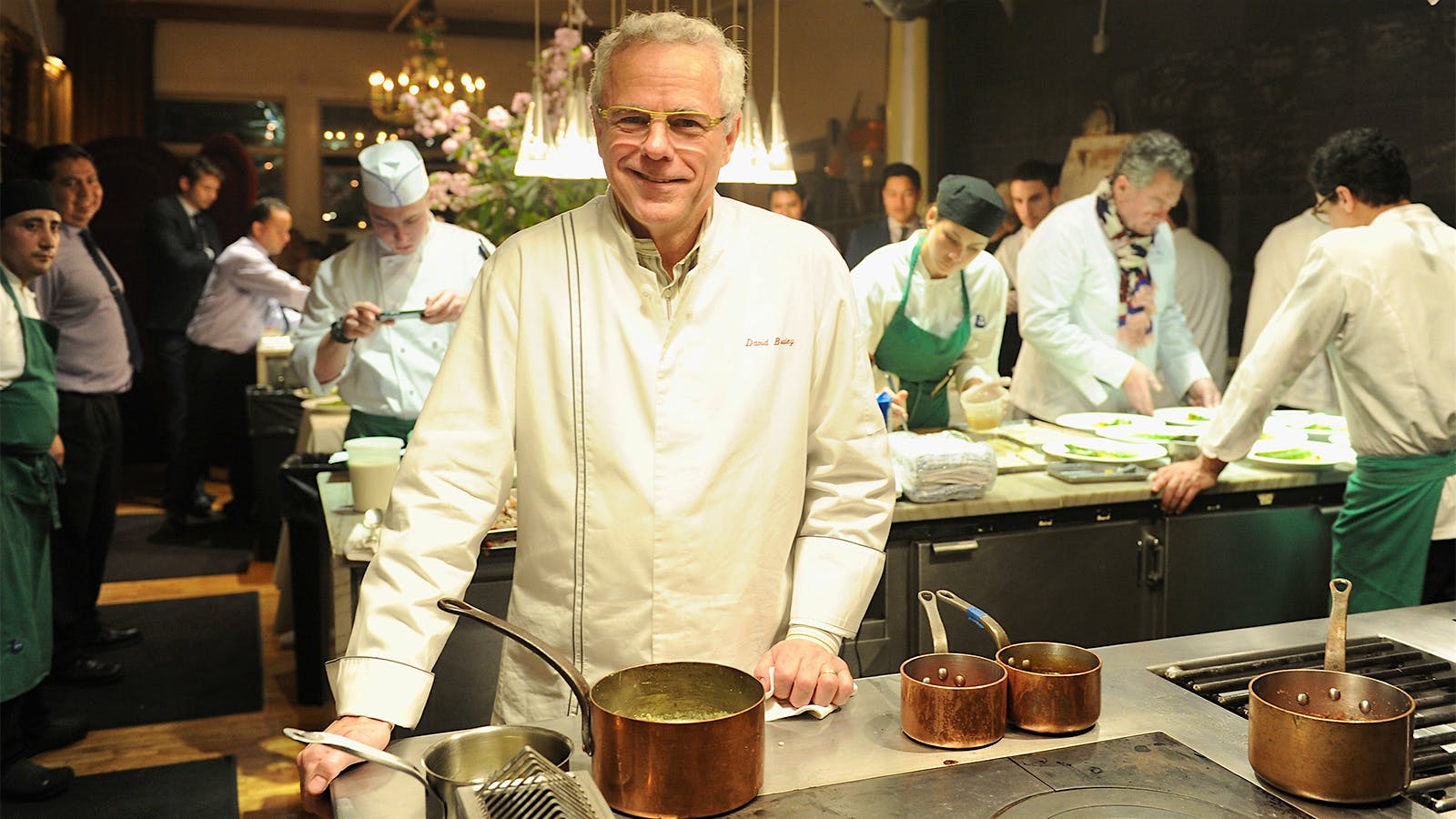The first thing guests would notice at the restaurant Bouley in Manhattan’s Tribeca was a wall of fragrant apples in the entryway. Whereas other restaurants might display dry aging sides of beef or mounds of exotic fish on ice, chef and owner David Bouley, who died Monday at the age of 70 from a heart attack, was making a very different point: Even apparently humble, pastoral ingredients deserve to be exalted.
Bouley spent decades at the top level of New York restaurants: first, beginning in 1985, at Montrachet in Tribeca with owner Drew Nieporent. He was an early American progenitor of nouvelle cuisine, sometimes with an Asian-inflected inclusivity. Later he would open Bouley, Danube and Brushstroke nearby (all Wine Spectator Restaurant Award winners), as well as other venues.
His grandparents were French and had settled in Rhode Island, so his command of the language gave him a leg up when he devoted himself to cooking and went to France, where he worked for leading chefs such as Paul Bocuse and Joël Robuchon, both of whom had led the move away from heaviness in French cuisine. On his return to New York he worked in top French kitchens there, including Le Cirque.
Montrachet helped shift the idea of luxury in New York. It opened on a fairly desolate block in a not-marquee neighborhood and served very fine, forward-thinking food at a time when luxury usually meant steak or lobster on the Upper East Side. Today the neighborhood is the epitome of luxury, and the influences of Bouley’s cuisine can be found across the country.
In person Bouley was intense and engaging; he had strong feelings about seemingly everything and ideas ranging from all over. His food could be that way, too. Much of it read on paper as French, belying his family and career background, but then that dish called mushroom flan actually turned out to be the Japanese custard chawanmushi dosed with dashi, ginger, yuzu and soy. It might be thickened with arrowroot or powdered kudzu. But don’t use the f word—fusion—as I did in conversation with him in 2012. “I try not to do con-fusion cooking,” he retorted.
His energy and curiosity were boundless. When I asked him where he got the hay that he packed into a Dutch oven with a chicken before sealing the lid with dough and roasting it, I got a good 10 minute lecture on where the hay came from, how old it was—basically everything but the farmer’s mother’s maiden name.
Bouley’s great talent was executing all of this perfectly and having it make perfect sense both in the particulars and as a whole. You could just eat the chicken or an apple dessert, but on his watch every detail was considered. In a sense, he was thinking about it so you wouldn’t have to: “Cravings are for flavor,” he said. “Intellectual cooking is a blast, but what people want without thinking comes from the physical sensation of flavor.”
